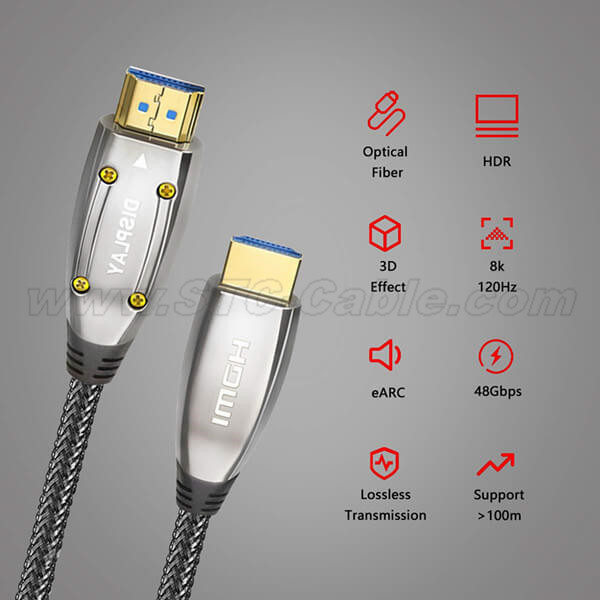Spend enough time as a Home Theater Enthusiast and you're guaranteed to learn -- the hard way -- that not all HDMI cables are created equally. This was true in the first days of 1080p. True in the first days of 3D. And even more true in the days of 4K/HDR when handshake and HDCP 2.2 compatibility issues will shut down your player or streaming capabilities.
For shorter HDMI runs -- 3ft to 25ft -- most 4K-rated like STC CABLE HDMI cables will work perfectly well.
But this changes when your display or projector is far away from your gear.
Jump past 25ft or 35ft, and everything changes. Read various Forums or Amazon reviews and you'll see dozens of frustrated folks who have tried multiple cables only to suffer handshake issues along with picture dropout or snowy pixelation.
So what should you do if you need to a long 4K / HDR HDMI cable for a remote projector or display?
you can try fiber optic HDMI cables.
Fiber ACTIVE Optic HDMI Cables for INCREDIBLE LONG HDMI runs supporting 18Gbps for true 4K@60Hz. Active fiber cables contain copper wires inside the cable run to power the SOURCE and DISPLAY electronics. Removable HDMI-A ends expose the Micro HDMI (Type D) connectors which can be connected directly to Micro HDMI devices.
2019 will be remembered for, among other things, the emergence of 4K + HDR/Dolby Vision with WCG (Wide Color Gamut) video and native 24/96K Hi Res Audio soundtracks. Today’s data-rich content has increased dramatically, reducing the distance these signals can travel over copper by 50 percent. My post today is about whether using a copper HDMI cable of any length still makes sense or if it’s finally time to adopt HDMI fiber optics for all 4K sources and displays regardless of the length.
The price for fiber optics has come down, so it’s an option to consider when your client is buying r new 4K TV. If you want the best 4K experience for your client’s home theater or gaming system, fiber is the way to go for very good technical reasons: 18 Gbps is fast, but the speed of light is way faster.
In the previous generation of high-def video, the highest resolution was native 1080p from a Blu-ray disc. When we tested HDMI copper cables using the benchmark eye pattern test, we discovered that HDMI over copper at 1080p collapsed the eye at 33 feet, resulting in a black screen. For distances above 30 feet for 1080p, fiber optic connections became the standard for the best performance. Distances under 33 feet can use copper and get decent results on 1080p. With three times more data, native 4K is much more challenging than 1080p. HDMI v2.0a requires a new eco-system of sources, cables, DAC, and display for the new resolution to come through. Old HDMI cables will not work for 4K because they’re too slow. HDMI v1.4 inputs and outputs on your AVR or pre pro won’t either for 4K.
HDMI copper cables are rated for their impedance. The least expensive versions are 27 ohms, the medium-priced versions are 24 ohms, and the most expensive high-speed copper cables are rated for 21 ohms and sell for the highest prices. Cat-6 is rated at 23 ohms, so it’s no panacea. Impedance is a measurement of “resistance” or how much the signal is impeded from reaching its destination intact. Anybody with an earlier generation projector or display found out through trial and error long ago that fiber was required for long distance transmission of native 1080p signals.
Send your message to us:
Post time: Sep-23-2019
